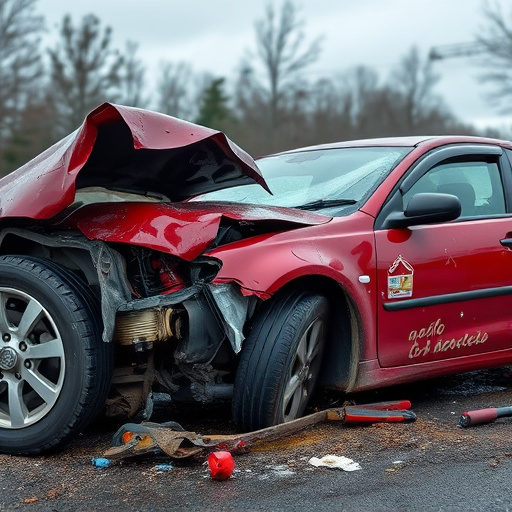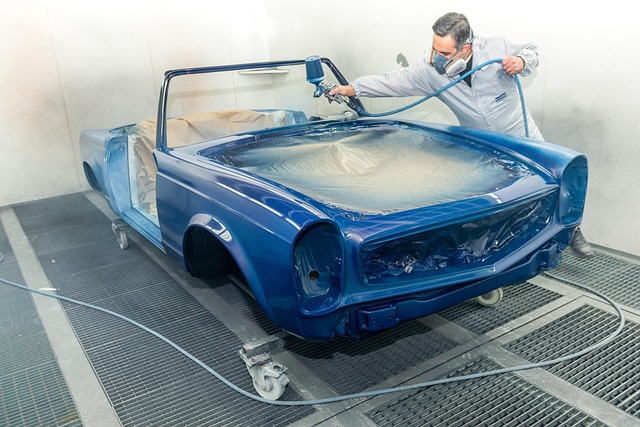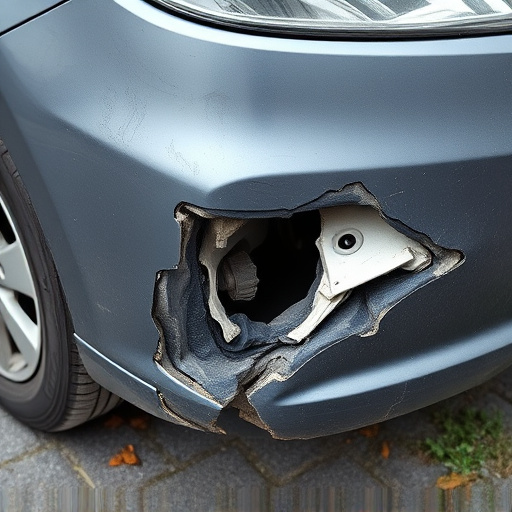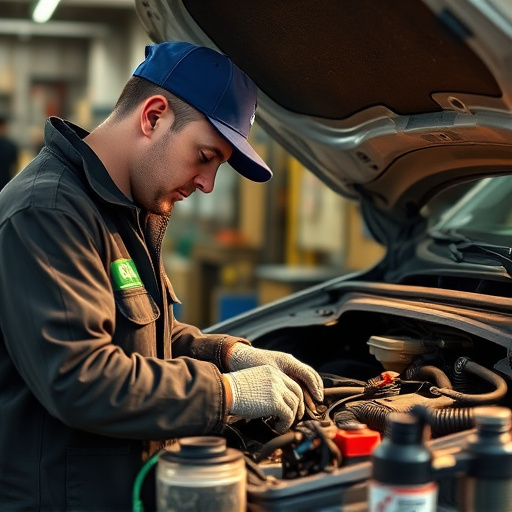Regular system checks by certified technicians are vital for maintaining the Mercedes PRE-SAFE system's optimal performance. Software updates enhance its features and accuracy, ensuring reliable protection during potential collisions. After an update, a simple 5-step guide allows owners to verify the system's operationality. This process includes starting the vehicle, accessing the menu, running tests, reviewing results, and addressing any issues with professional automotive repair.
After software updates, ensuring the intact functionality of your Mercedes’ PRE-SAFE system is crucial for optimal safety. The PRE-SAFE system uses sensors to detect potential collisions and prepares the vehicle and occupants by inflating airbags and tightening seatbelts. Updates may alter this critical system’s performance. This article guides you through understanding the PRE-SAFE system, the impact of updates, and a step-by-step process for performing a post-update system check to ensure your Mercedes remains a reliable safety haven.
- Understanding Mercedes PRE-SAFE System Functionality
- Software Updates and Their Impact on PRE-SAFE
- Step-by-Step Guide to Post-Update System Check
Understanding Mercedes PRE-SAFE System Functionality

The Mercedes PRE-SAFE system is a cutting-edge technology designed to enhance passenger safety during potential collision events. It’s an innovative car repair service that utilizes sensors and actuators to take proactive measures before, during, and after a crash. When triggered, this remarkable system prepares the vehicle for impact by applying brakes, tensing seatbelts, and adjusting airbags, reducing the risk of severe injuries. Regular Mercedes PRE-SAFE system checks are essential, especially post-software updates, to ensure its optimal performance and reliability.
Performing these checks in a reputable car repair shop guarantees that every component functions as designed. Technicians will test various elements, including impact sensors, control units, and actuators, to verify their integrity. This meticulous process also involves examining auto glass repair components, ensuring they are in top condition to prevent any shattering effects during an accident. By keeping the PRE-SAFE system in top shape, car owners can have peace of mind knowing that their vehicle is equipped with one of the most advanced safety mechanisms on the market.
Software Updates and Their Impact on PRE-SAFE

Software updates play a pivotal role in enhancing the capabilities and safety features of Mercedes vehicles, particularly the PRE-SAFE system. These updates often introduce new functionalities, improve existing ones, and ensure compatibility with evolving technology standards. When it comes to the Mercedes PRE-SAFE system check, post-update evaluation is crucial. It involves verifying that all sensors, actuators, and control units are functioning optimally in conjunction with the updated software.
The impact of software updates on the PRE-SAFE system can be significant. For instance, an update might improve the system’s response time during an accident, enhance its ability to detect specific collision types, or refine communication between various components like airbags and seatbelts. Regular checks post-update are essential to guarantee that the PRE-SAFE system remains a reliable lifesaver, ensuring passenger safety in the event of a collision, much like how a car scratch repair or auto glass replacement restores a vehicle’s structural integrity after damage.
Step-by-Step Guide to Post-Update System Check

After a software update on your Mercedes vehicle, ensuring the PRE-SAFE system is functional and ready for deployment is crucial. Here’s a step-by-step guide to help you perform this check:
1. Start Your Vehicle: Turn on the ignition and let the engine idle for a moment. Ensure all systems are powered up, including the display screens.
2. Access the PRE-SAFE Menu: Use the vehicle’s center display to navigate to the PRE-SAFE settings. This system is designed to prepare occupants for potential crashes by tightening seatbelts, adjusting mirrors, and more. Look for an icon or menu option specifically labeled as “PRE-SAFE” or “Safety Systems.”
3. Initiate a Manual Test: Within the PRE-SAFE menu, find the option to perform a manual test. This will simulate various scenarios to check the system’s responsiveness. Press the button to start the test.
4. Observe the System Response: As the test progresses, watch for any visual or auditory cues indicating that the PRE-SAFE system is functioning correctly. The seatbelts should tighten, and you might hear alerts sounding. Make note of every step to ensure all components deploy as expected.
5. Review Test Results: After the test, a summary will appear on the display, detailing what was checked and its results. Ensure everything passed with no errors or warnings. If any issues are found, consult your vehicle’s manual or seek professional automotive repair services at an auto collision center for further diagnosis and repair.
After software updates, a thorough Mercedes PRE-SAFE system check is essential. By following the outlined steps, vehicle owners can ensure this advanced safety feature remains functional and optimized. Regular checks reinforce the connection between cutting-edge technology and driver peace of mind, allowing for a more secure driving experience. Remember, a well-maintained PRE-SAFE system could make all the difference in an emergency situation.














